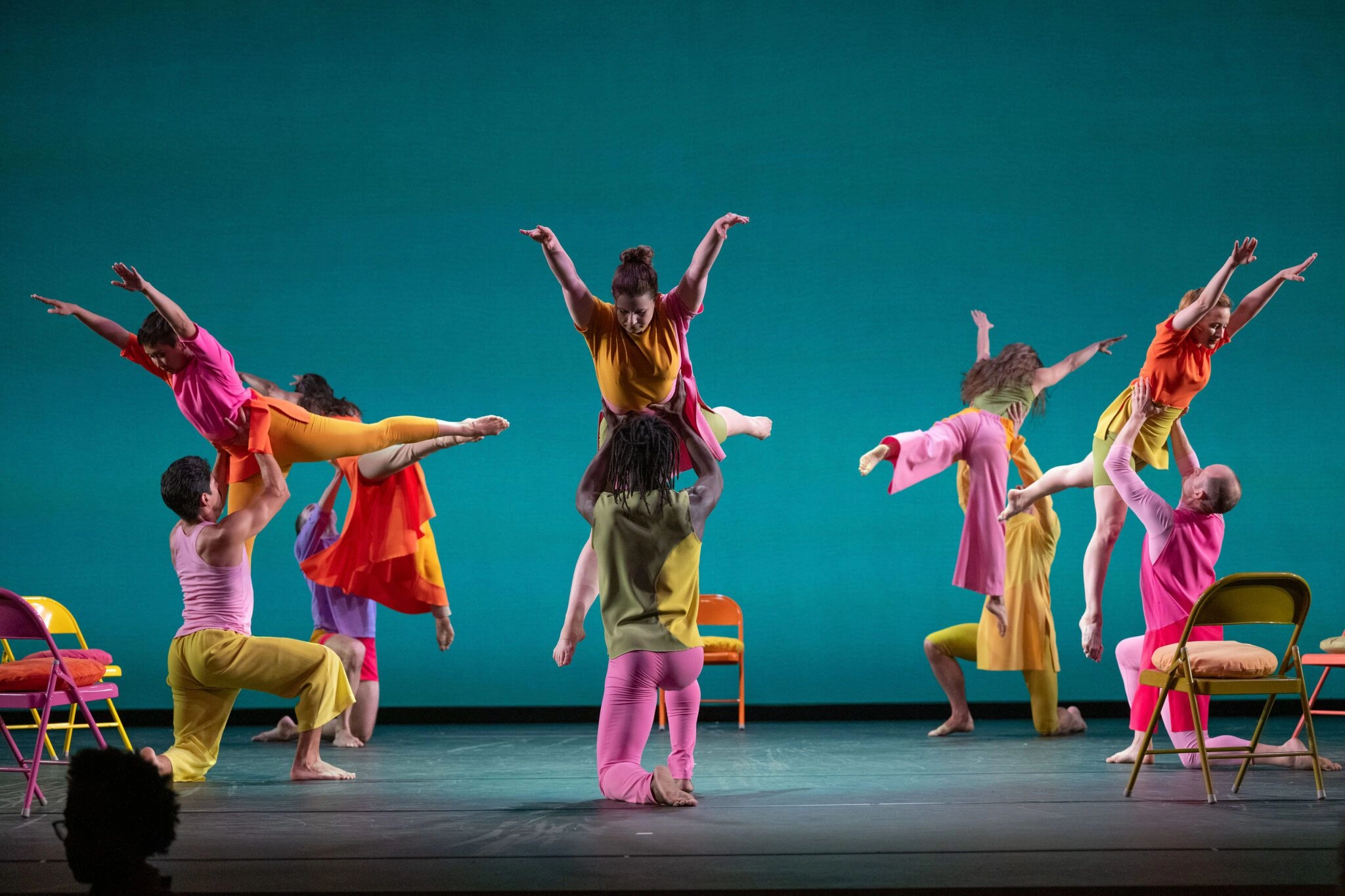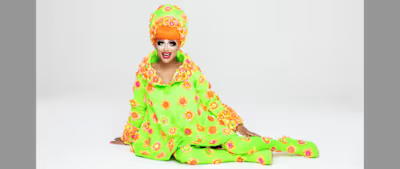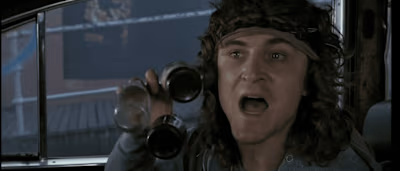Mark Morris and Isaac Mizrahi bring their Burt Bacharach homage…
'The Look of Love' comes to BAM for a four-night run starting March 20 — just don't call it a jukebox musical
“As a kid in Brooklyn, I was constantly impersonating Dionne Warwick and Dusty Springfield and any of the women singing Burt Bacharach songs,” says designer Isaac Mizrahi. “Every single solitary artist I loved would do a Bacharach tune, whether it was Streisand, everybody was doing them. You couldn’t escape his music in those days, and thank God.”
So when Mizrahi heard that choreographer Mark Morris — his friend of over 35 years — was creating a dance homage to Burt Bacharach called “The Look of Love,” it was a foregone conclusion that he’d be tapped as the show’s production designer.

‘The Look of Love’ at BAM (Photo by Christopher Duggan)
Pianist and composer Ethan Iverson worked closely with Morris to select 14 songs by Bacharach and lyricist Hal David for “The Look of Love,” which comes to the Brooklyn Academy of Music from March 20 to 23. Iverson arranged the show’s tunes based on his conversations with Morris and their preference for vocals, piano, trumpet, bass and percussion, switching up the tempo throughout.
Which is to say the performance by the Mark Morris Dance Group and Music Ensemble isn’t a simple jukebox musical.
“That was a whole giant part of this: Ethan’s take on Burt Bacharach,” says Mizrahi. “You will not expect some of the really beautiful interpretations of this music that Ethan has brought to it.”
Their BAM performance is a homecoming, of sorts, as Mizrahi grew up in Midwood and Morris’s Dance Center sits two streets away from BAM in Fort Greene. The studio has over 1,200 students a week and is home to the sprawling Dance for Parkinson’s program, though it was hit hard during the pandemic.
“We’re back with a reduced company but we need more income to fund our annual programs,” says Morris.
To that end, a set of six chairs designed by Mizrahi for the show is being auctioned off to benefit Morris’s philanthropic efforts.
Brooklyn Magazine spoke with Morris and Mizrahi about their collaboration and long friendship.
This interview has been lightly edited for concision and flow.
Mark, how did you and Ethan Iverson decide which of Bacharach’s songs to use?
Mark Morris: It’s not a jukebox musical so we selected songs we both like, argued about a few of them, and then we chose the repertory. Then we had to decide how long we wanted it, arrangements of things, relative key, and relative chord progression. The last thing we did was put them in their final order. So we knew the songs we were doing but I wasn’t fully happy with their sequence, but we resolved that.
Isaac Mizrahi: Mark is very, very specific about music, and the best way to get him to do something is to petition against it. Mark’s psychology is if you say, “Don’t do this, Mark,” that’s one way to get him to do it. I’ve learned that in the past, and I just decided not to say anything at all. Because he also has the best taste in music of literally any person I know.
Isaac, how did you become involved in the project?
Mizrahi: Mark knew that if I didn’t get this job I would go on a smear campaign because he knows how much I love Burt Bacharach. I’ve been friends with Mark for such a long time, like 35 years or something, and we have remarked on several occasions how much we love music and it’s always a surprise to find out that Mark likes something enough to work on it. So it was a big surprise for me to find out that Mark was enamored with this popular music enough to focus on it and give it the breadth that he’d given it.
Morris: He’s designed a lot of sets and costumes and worships Burt Bacharach too. So he asked to do it, or I offered it to him. We probably said it simultaneously during the same dinner date. He listened to the music, had a bunch of suggestions, and decided on the color palette. And then, of course, I’m using chairs in the performance, which is sort of a joke because we never use chairs. If you’re a choreographer that’s the first rule. But I like them. So it’s 10 dancers, five chairs, and Isaac being Isaac, he said, “We have to paint the chairs these exact colors,” which are gorgeous and perfect. Then I decided we needed pillows. So he designed the pillows. He designed pillows, chairs and outfits. It looks great and it’s comfortable. They’re not period colors, but very bright, hopeful, springy colors.
Isaac, will you talk about the orange, lime, grape and lemon chairs you created?
Mizrahi: It’s a big thing to consider a chair on stage. A chair is not the easiest thing to design. A chair is a real thing, it’s like a thing in the world, right? Not that clothes aren’t, but chairs, I mean, wow, that’s another whole thing. They were using folding chairs in the rehearsals and it gave me the idea to make folding chairs in colors. My vision of it was so incredibly beautiful. Mark loved the idea of getting chairs to reflect the colors of the costumes. Starting with the clothes and then the chairs and then the pillows. Each is another layer of color, and it’s not easy, let me tell you, to get anything in this world powder-coated that way, meaning enameled. And listen, I had a set of those chairs made for myself ’cause I knew that this is one of the few times you will ever see those chairs in a range of colors like this.
Isaac, you have a new podcast about failure called “Hello Isaac.” Is there anything in the process of bringing “The Look of Love” to life that failed but something better was born from it?
Mizrahi: I’ll tell you what, that’s the great thing about working with Mark. He is the auteur of every single inch and aspect of his work. I bet you could talk to any of the designers who collaborate with him and they’ll tell you it’s a process in which you are shot down sometimes. You have a thought and he goes, “Maybe not,” and that happens quite often. But where you end up with him is always much better than the place you originally conceived.
What did you suggest that Mark shot down?
Mizrahi: I had a thought to keep the colors quite weirdly sophisticated and monochromatic. I thought it should be all one color or it should be black and white and quite graphic. And he didn’t respond very well to that. He knows I have synesthesia — where I hear music and I see colors — and I can’t help it. It’s one of the things I have. He was the one who actually helped me identify that condition in my life.
So when you listen to Burt Bacharach, are you thinking of pinks and oranges?
Mizrahi: Yes, yes, and also the horns, when I hear brass instruments, I usually see very warm colors. I usually see orange, red, and pink. When I listen to a bugle or when I listen to a trombone, I always think of Burt’s music as very heavily brass.
Mark, how did you help Isaac learn he has synesthesia?
Morris: Oh, I don’t know. You have to ask his therapist about that. There’s a certain aspect of synesthesia in an awful lot of people and sometimes they’re drawn to the arts. But this isn’t the first time Isaac’s used to bright pink [laughs.]. I’m not giving any secrets away.
Mizrahi: One night I think we were at the symphony listening to Brahms and I kept telling him, “Darling, it’s so purple here, it’s so lavender, I can’t stop seeing lavender.” He said, “Darling, you might want to get that checked out because I think it’s synesthesia,” and he’s right. I can’t separate the sound of something from the color. So “The Look of Love” became this exercise in the use of and the balance of color against the music.
Mark, I noticed the tempo of some songs in the show is a little faster and slower than their recordings.
Morris: Tempo is a living thing, not a click track. If I wanted a recording, I would just use the recording and save a shitload of money. I’m not trying to recreate anybody’s performances in any way. I don’t know of anybody who would want to do that. That’s the jukebox musical. That’s the Michael Jackson show, I don’t know that stuff. It’s not an artifact and we make up new dances to old music, the music’s new ’cause it’s live every night. The answer is our tempi are living and it depends on the other pieces. It all depends on everything. Burt’s music is very strict and very specific, but it’s also music. You can go wherever you feel that you need to go with it.
Isaac, did you have to consider the tempo when designing the dancer’s clothes?
Mizrahi: Yes, I was at a few of the rehearsals right in the beginning, and I noted here and there that something was faster or slower. That’s Ethan and how he sees it vis-à-vis how he feeds it through Mark. I knew Burt a little bit and he was so specific about tempo.
Did Burt see the show before he passed away in February of last year?
Mizrahi: He came to the dress rehearsal of the first show in L.A. and he just loved it. He gave Mark a stamp of approval at the show. He had a few notes and Mark listened to the notes. So that was a thrill in terms of a stamp of approval from Mr. Bacharach himself. That happened literally I-don’t-know-how-many weeks before he died. It was shortly after that dress rehearsal that Burt Bacharach died.
Like this project
Posted Mar 21, 2024
'The Look of Love' comes to BAM for a four-night run starting March 20 — just don't call it a jukebox musical.
Likes
0
Views
18





